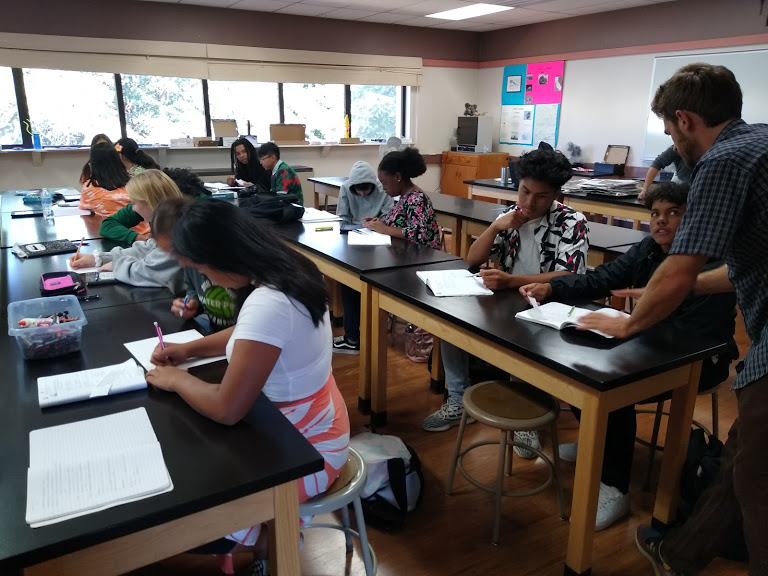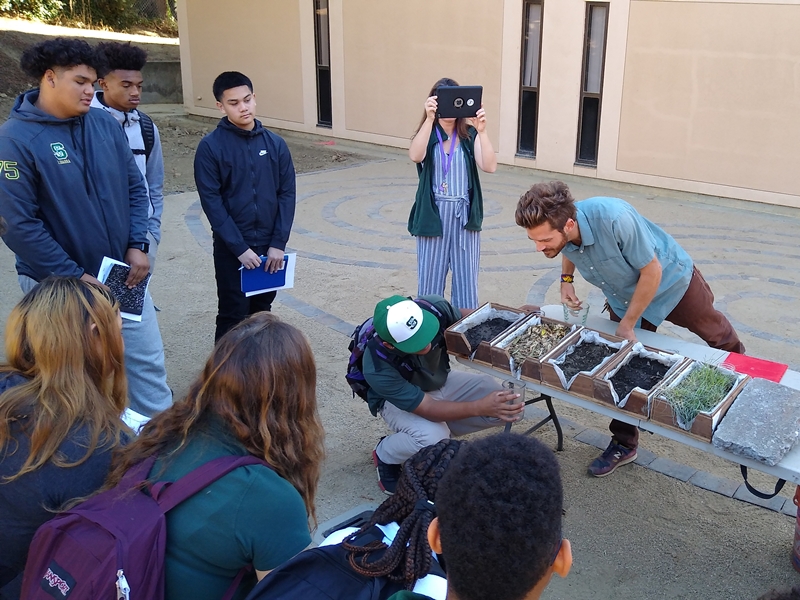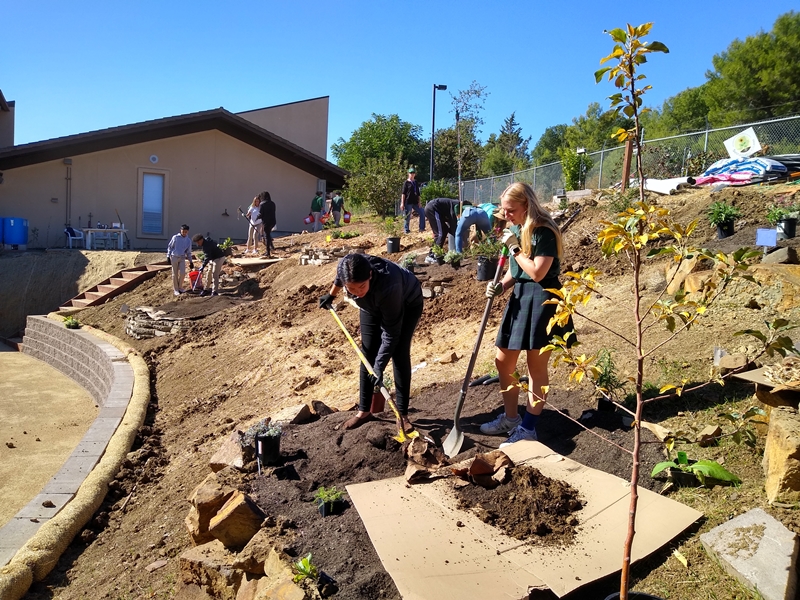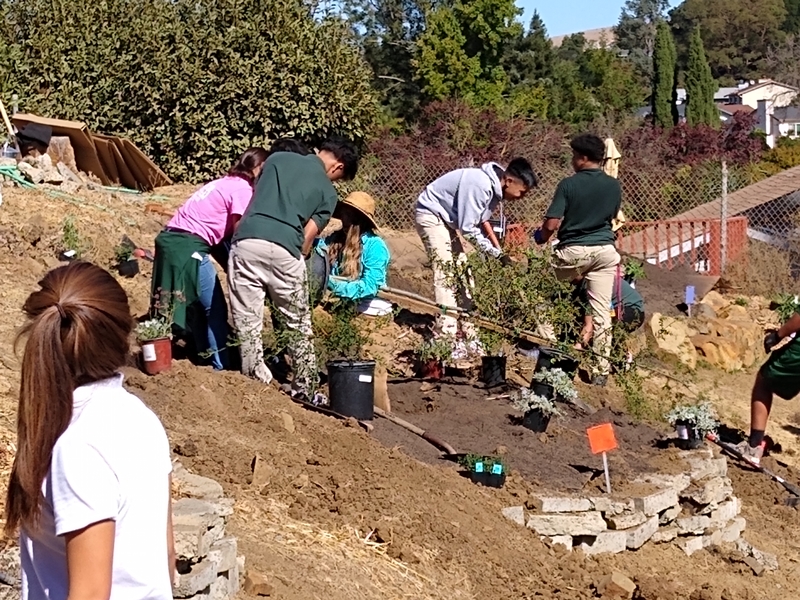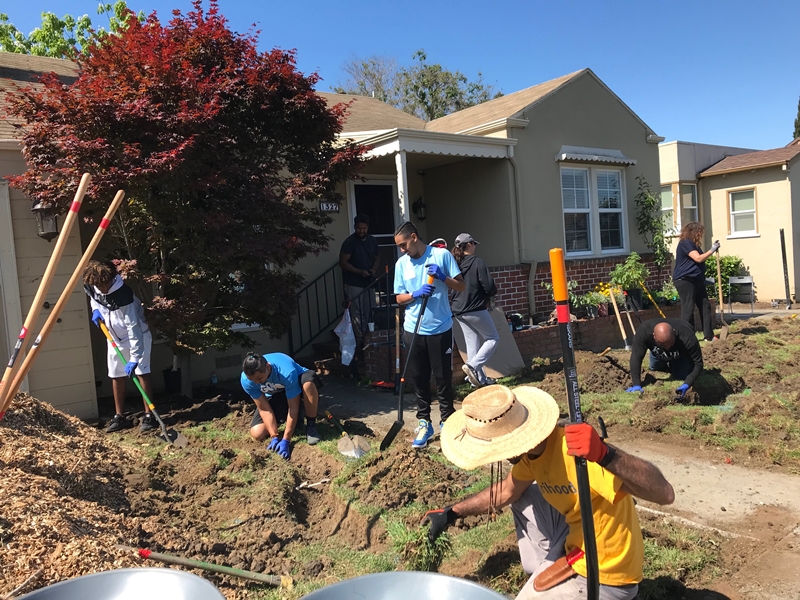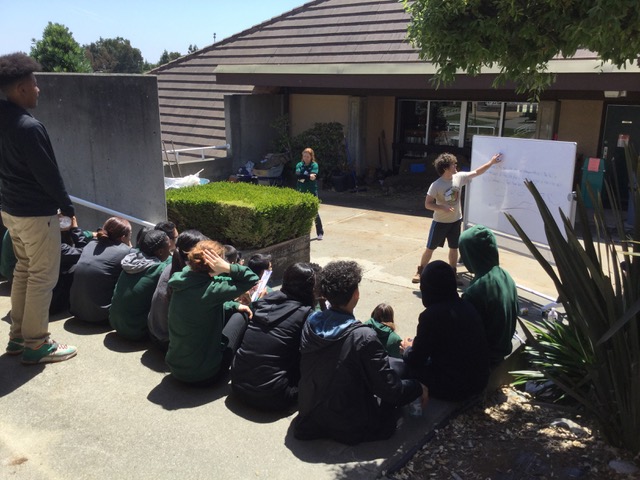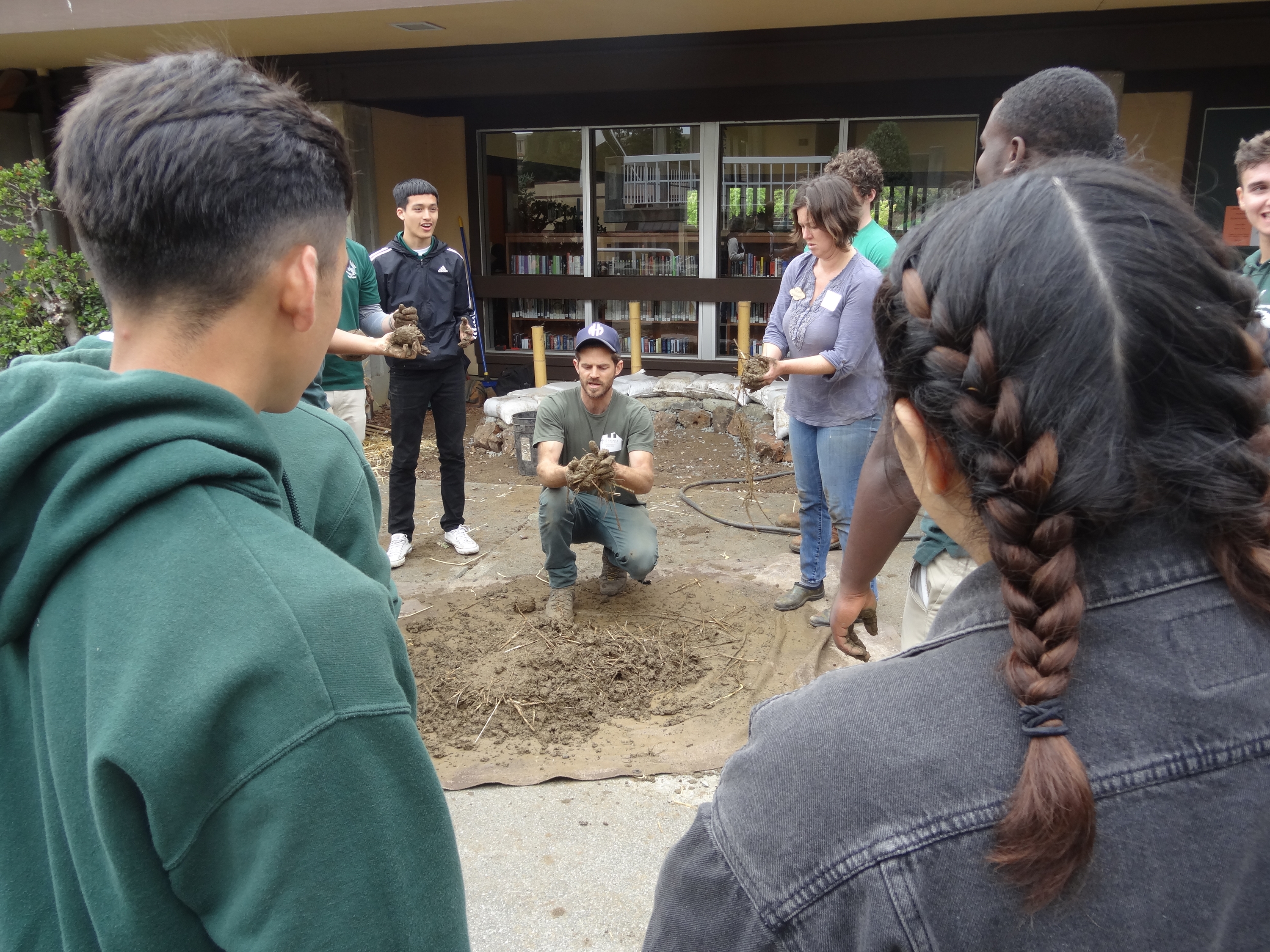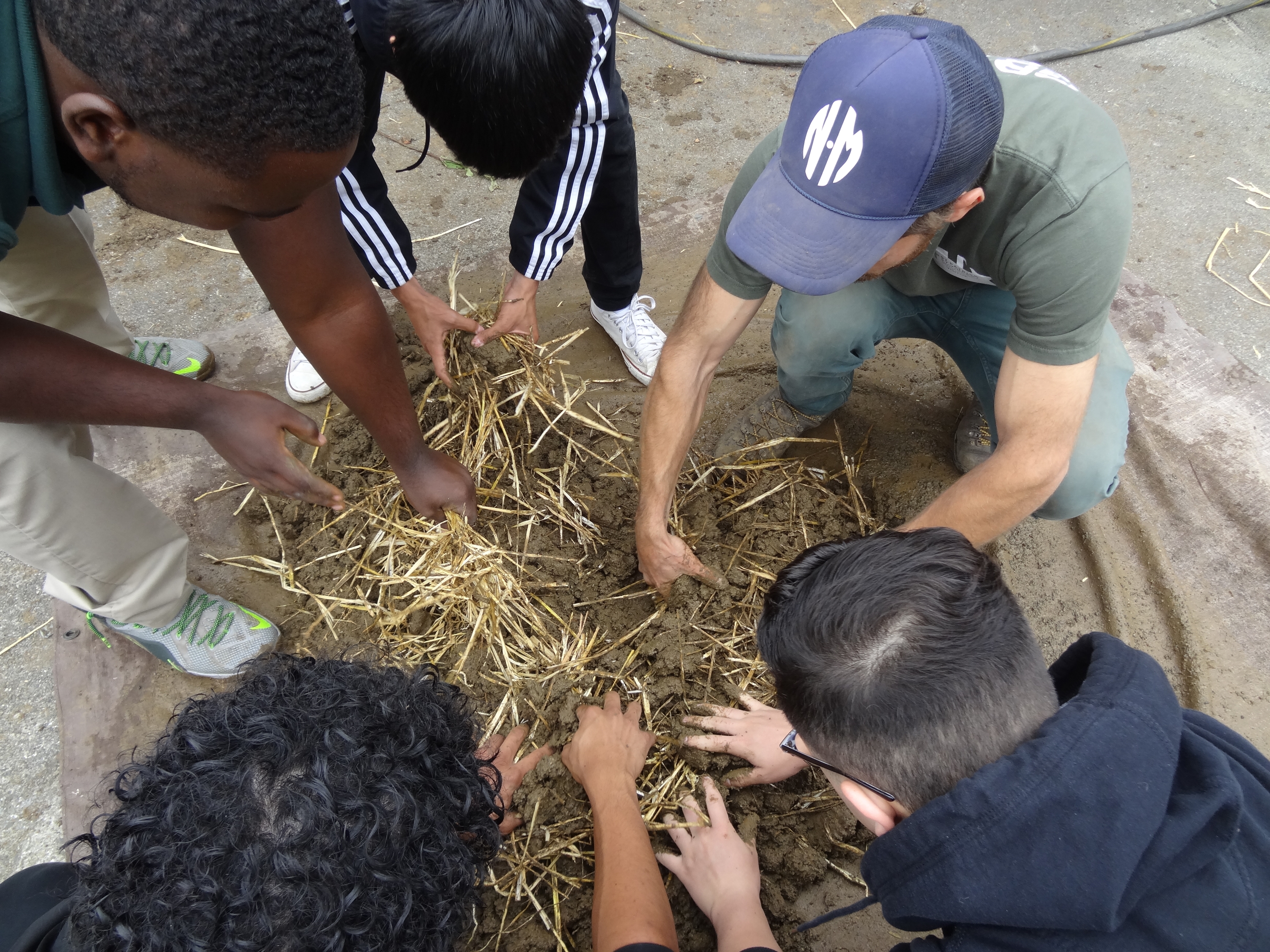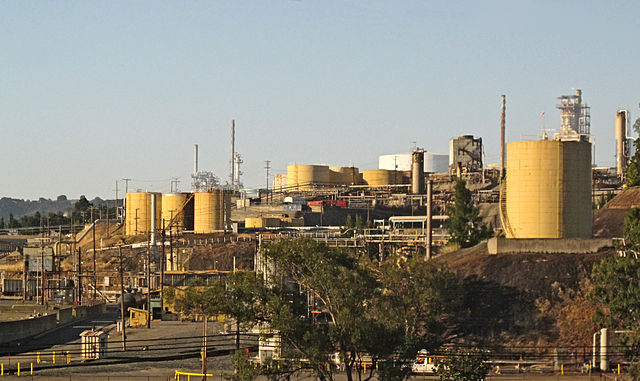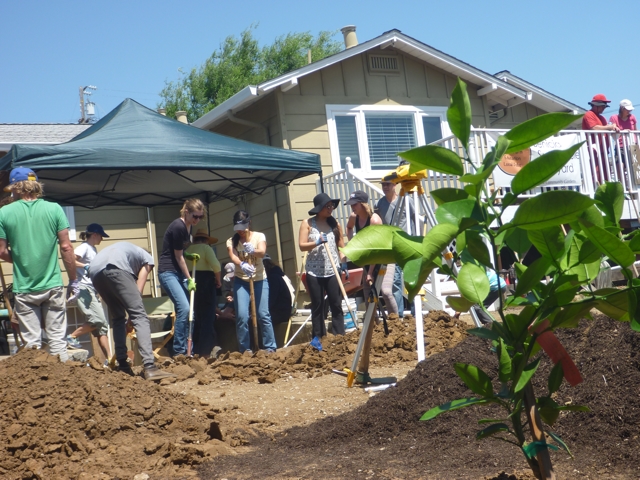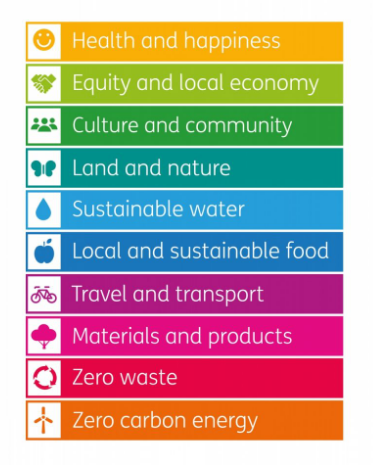More Sustainable Landscaping Education Programs Planned for Benicia
By Allison Nagel, Workforce Development Program Manager

Students in the 2020 Land & Water Caretakers certification course do a soil test at the project site
As we plan for an exciting slate of programs based in Benicia for 2021, we want your insight on what sort of workshops we should hold in the city — what is most interesting to potential participants as well as property owners. These workshops will help to strengthen and expand the programs we piloted in Benicia at the beginning of this year.
These Benicia programs support our goals of public education through class instruction and public workshops, targeted sustainable landscape professional education for adults and high school interns, and measurable improvements for the city of Benicia, including water savings, improved soil health through mulching and keeping organic matter on-site, and planting trees and understory plants for carbon sequestration, food production and heat island mitigation through shade and evapotranspiration, which moves water through the plant from the soil to the leaves where it can evaporate and cool the air.
Our Youth Leadership and Workforce Development programs in Benicia launched in January, bringing instruction and certification programs through adult education and high school internships. We offered our Land & Water Caretakers program in partnership with Benicia Adult Education to participants from around the county looking to build their sustainable landscaping design skills for use in their careers, seeking new work and at their own homes and in their communities. Working with Liberty High School’s award-winning Learning Through Interests program, we offered an internship that taught students about sustainable landscaping and systems thinking while building hands-on skills that they could put to use in further study or future careers.
Participants in both programs worked on creating demonstration food forest gardens in Benicia: Wild Cherry Way and Giardino su una Colina (Garden on a Hill). Shawn Carter and Maleik Dion of Resilient Solutionaries were the course instructors for both programs and designers for Giardino su una Colina, and Lauren Bennett was the designer for Wild Cherry Way.
At Wild Cherry Way, the Adult Education Caretakers worked alongside their class instructor and garden designer to create a backyard food forest complete with three fruit trees and a laundry-to-landscape greywater system. The Caretakers went through the design process and then joined in three public workshops to dig swales for roofwater capture, work on the greywater system and put in the plants and drip irrigation. It all added up to nearly 33,000 gallons of possible annual water savings for the property. The Caretakers then took what they had learned from that process and created a design for another Benicia property based on their knowledge and what the homeowners wanted for their backyard. Funding for the program and the public workshops came from the second amendment to the Valero/Good Neighbor Steering Committee Settlement Agreement, the Solano County Water Agency and student fees. Republic Services donated compost for the Wild Cherry Way project.
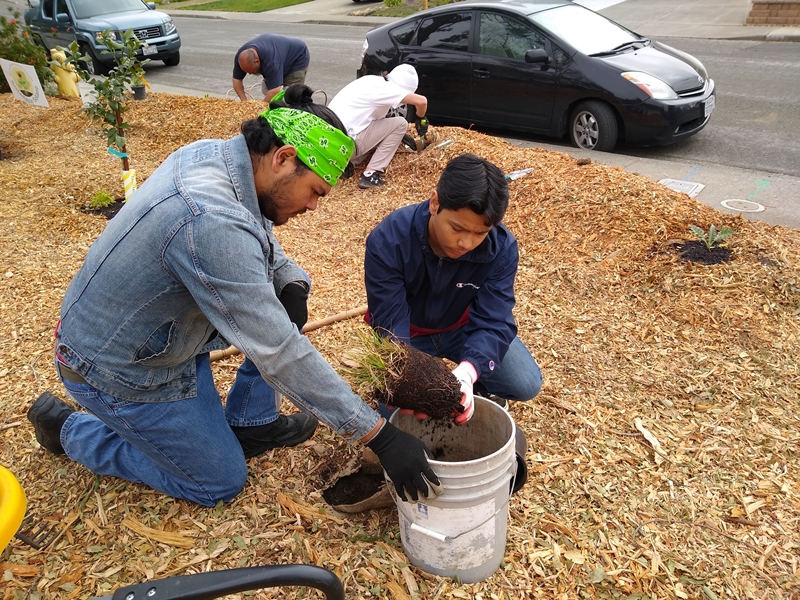
Liberty High School students in the Land & Water Caretakers internship work on their project site
At Giardino su una Colina, the Liberty High Caretakers went through a similar process with their instructor, learning about permaculture design, meeting with the homeowner, and, through a front-yard lawn conversion, creating a demonstration food forest that introduced the concept to neighbors and others. The students dug swales for roofwater capture, sheet mulched, constructed guilds of plants that work together and replaced the sprinkler system with drip irrigation, resulting in a possible annual water savings of more than 96,000 gallons for the site. Students then used what they learned to design their own guilds and create a sample design to earn the certification. Funding for the program came from the second amendment to the Valero/Good Neighbor Steering Committee Settlement Agreement, and Republic Services provided lunch from Benicia restaurants for the days the students worked on the installation.
There were challenges, perhaps most noticeably how the shutdown from COVID-19 affected the conclusion of both the adult education and internship programs, with final presentations moving online and the cancellation of planned field trips. We are already planning for our next Land & Water Caretakers course through Benicia Adult Education and high school fellowships for this coming January. We are also planning to offer Sustainable Solano’s first Permaculture Design Certificate course in Benicia starting in January! You can find more information here and we will provide exciting updates in the coming months.
For all of these programs, we are figuring out what we can offer online and how to best hold outdoor workshops that are safe and adhere to the guidelines from Solano Public Health, the state and the CDC. We also want your insight on what to offer. While this year’s Caretakers courses focused heavily on permaculture design, for the coming year we are trying to offer a variety of workshops in Benicia that would be open to the public as well as those enrolled in the Caretakers certification programs. Maybe you’ve always wanted to learn how to convert a sprinkler system to drip irrigation, or you want to create a guild of supporting plants around an existing fruit tree, or capture all of that rainwater off the roof during the rainy season.
If there are workshops you would like to see in the year ahead, please let us know by taking this quick Benicia Workshop survey. And if you are a Benicia resident interested in hosting a workshop either on your own property or a community site, such as a church or school, please fill out our Sustainable Landscaping Interest Form.
Questions? Contact Program Manager Allison Nagel at allison@sustainablesolano.org

